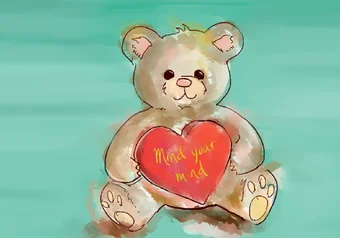A few years ago, I had the not-so-shocking realization that my social media habits were indeed fueling procrastination and lowering my productivity levels. Thus, I made the decision to delete all but one of my social media accounts. I said goodbye to my Instagram and Snapchat accounts, shut down my Twitter and kept only Facebook, reasoning that it was the only way I had to keep in touch with my childhood friends.
I didn’t regret my decision to take a break from the digital world. However, in the year that followed, I often found myself feeling left out and disconnected, especially as my friends spent most of their time snapchatting our outings and tweeting about our midnight adventures. I was under the constant impression that I was missing out and, in a way, I was.
You see, the problem was that by removing myself from social media altogether, I was also indirectly missing opportunities to feel connected and part of a community. Being an active participant on social media is almost inevitable in this day and age, but after weighing the pros and cons, I realized that I could choose how I related to it.
Here’s a set of general guidelines I found helpful:
1. Personal vs. professional space: Although most people use social media for pleasure-related purposes, for others, it can also serve as a way to promote a business, project or idea. Setting a clear boundary between the two spaces and knowing who will be exposed to your content can be helpful. Another thing to keep in mind is that posting inappropriate photographs or comments might cost you a job, as employers frequently research job candidates using social networking sites.
2. Privacy, privacy, privacy: Review your social media accounts, privacy settings and the people you’re interacting with. Personally, I keep my Facebook friend list under 300 because you don’t really need to add that cute girl you spotted at the latest party — she’s practically a stranger. A good rule of thumb is to limit the number of acquaintances because they are, after all, simply acquaintances and shouldn’t have access to a lot of your personal information.
3. Self-regulation: Lurking on social media when you’re having a shitty day will do anything but improve your mood. It’s easy to fall into the trap of comparison and this will most likely lead to feelings of exclusion. Most people don’t reveal the ugly, vulnerable part of themselves on social media. As a result, lamenting about how your peers are living glamourous, perfect lives will only lead to self-pity and self-created suffering. Of course, reality checking and letting go of the illusions that dominate most social media platforms is easier said than done. Although you might absorb this information on an intellectual level, you may feel differently emotionally.
4. Self-awareness is key: Are you using social media for the “right” reasons? When posting, are you doing it to impress others or to make yourself happy? Used wisely, social media can be a wonderful way to connect, share and reach out. However, as with anything else, there is a darker side and individuals who seek that side can indirectly put themselves in a harmful position.
Monitor how much time you’re spending on social media and keep in mind that you don’t need to sign up for all social media sites at once. Block triggering hashtags that could lead to distressing images or content. Filter your dashboard and unfollow people whose posts make you feel like shit. Follow pages that provide inspiration and motivation. Above all, remember that although cultivating a healthy relationship with social media takes a serious amount of self-discipline and a whole lot of practice, it is essentially a matter of sticking to a series of good habits.
Share this article
First online



